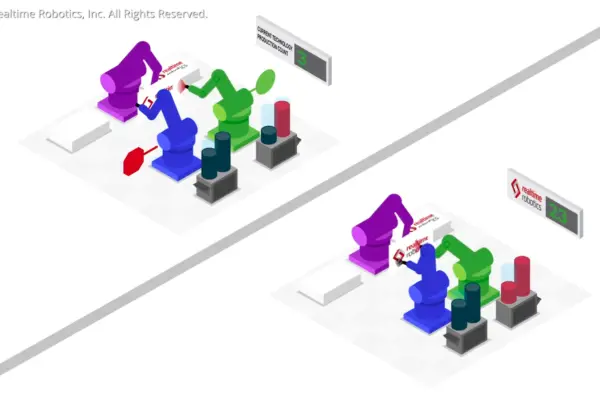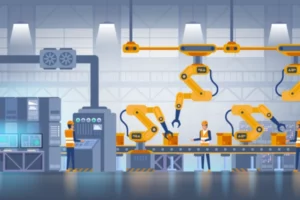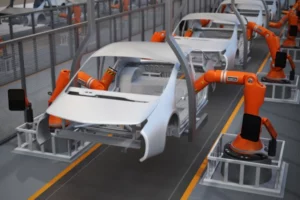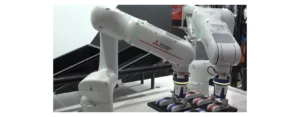If one robot is good, then more robots should be better. In theory, putting several robots in a workspace, with all of them working simultaneously, should greatly boost productivity. In practice, however, the marginal benefits of adding robots are slim. Why? Programming! Engineers must orchestrate all of the robot motions to achieve as much performance as possible while guaranteeing that there will never be any collisions. This is extremely difficult — just imagine if you had to “program” a restaurant’s kitchen, orchestrating all of the motions of several chefs.
Because the problem of avoiding collisions is so difficult, robot programmers fall back on a simple, but poor performing solution. They identify every region in the workspace that is reachable by more than one robot, and they refer to these regions as interference zones. They then use locks to ensure that only one robot may be in an interference zone at any time, thus guaranteeing that collisions cannot occur. This solution is easy, but misses many opportunities for robots to be safely moving within different parts of an interference zone.
With technology from Realtime Robotics, multiple robots can productively share a workspace, with no complicated programming or interference zones. Realtime’s solution just requires the user to provide a list of tasks and task priorities, and this can be done with a simple PLC program without the need for interference zones or orchestration of any kind. From there, Realtime’s motion planning technology automatically finds collision-free motion plans for every robot, significantly reducing deployment time and cost, and significantly improving the productivity of the workspace.





